- 1. Año Nuevo State Park, Moss Beach Distillery, San Mateo County, California
- 1.1. Elephant seals, Stellar sea lions, gray whales, and migratory birds
- 2. Bracken Cave, Garden Ridge, Texas
- 2.1. Mexican free-tailed bats, rare migratory birds
- 3. Cape Henlopen State Park, Delaware
- 3.1. Raptor migration
- 4. Katmai National Park & Preserve, Alaska
- 4.1. Brown bear, sockeye salmon runs, migratory birds, humpback whales
- 5. National Bison Range, Charlo, Montana
- 5.1. Bison, bighorn sheep, pronghorn, lots and lots and lots of birds
- 6. Northwest Territories out of Yellowknife, Canada
- 6.1. Caribou, musk ox, arctic fox, arctic hare, arctic wolf, ptarmigan, grayling
- 7. Your Favorite Beach in Mexico
- 7.1. Six of seven sea turtle species
- 8. My Apologies to Everglades National Park, Florida
- 8.1. If it can eat you, it lives here
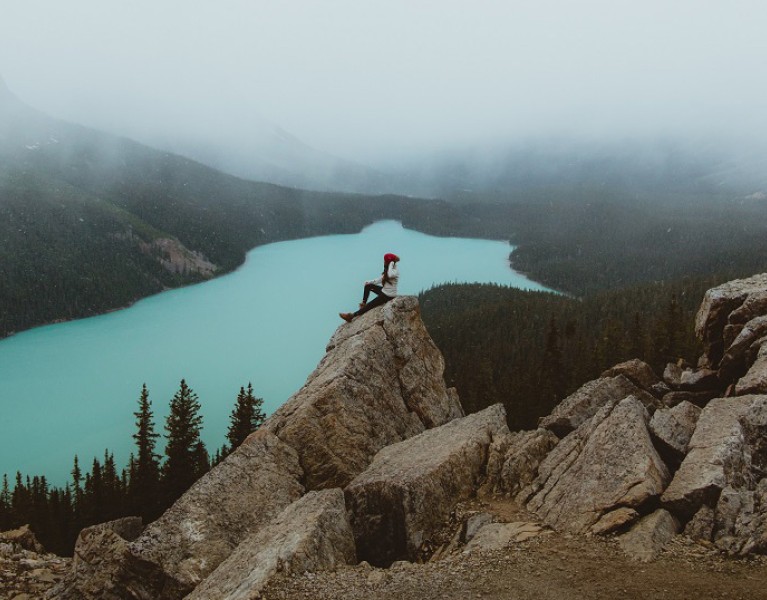
8 Once-in-a-Lifetime North American Wildlife Viewing Adventures
Table of Contents [Show]
When we're rocking our favorite outdoor adventure sports, wildlife is a welcome bonus to our outing. For most non-hunting North Americans, "going to see (x animal)" is a phrase we reserve for a trip to the zoo, not the purpose of an expedition.
But sometimes the hike, paddle, or pond hop is just a means to an end. In this case, the end being the chance to see animals most people never encounter outside a fenced-in park.
Here are a few of my personal favorite go-to wildlife adventures, in no particular order. I've thrown in pointers on the best times to go, and how to make the most of the experience. It's a given that you'll take your best binoculars and your favorite nature photography gear with you, but after some hard-won lessons, I thought I'd share my "must-bring" items.
1. Año Nuevo State Park, Moss Beach Distillery, San Mateo County, California
Elephant seals, Stellar sea lions, gray whales, and migratory birds
Join volunteer naturalists for a three-hour guided walk through coastal scrub to the West Coast's most famous elephant seal "haul out." Elephant seals are named for the males' flabby, floppy snouts, but their size might have had something to do with it. These big boys can grow to 16 feet long, weighing in at as much as 5000 pounds.
You'll pass by shell piles ("middens") left behind by the coastal Native Americans who thrived here only a couple of hundred years ago and have a chance to see a wide variety of migrating birds. They'll be plenty of time to photograph the marine mammals, and it only takes a few minutes to get used to the smell!
Here's an insider tip: After visiting Año Nuevo, it's only a few minutes north to Half Moon Bay and Moss Beach Distillery, where you can grab a fantastic meal and cuddle up on their pet-friendly heated porch to look for migrating gray whales. And by the way, the restaurant (the ladies' room, in particular) is reportedly haunted. You'll just have to ask the staff for details.
- When to go: December 15 through January for breeding season, when the elephant bulls battle Sumo-wrestler style. You'll see adorable seal pups, too.
- What to wear: Layer up for California's unpredictable winter weather: Wind, wet... or warm and sunny.
- What to bring: A very large duffel bag in which to smuggle out a baby seal. Just kidding; that's illegal and not very nice at all. Bring a telephoto lens for your camera. The guides will let you get surprisingly close to the seals and sea lions, but a tripod and long lens will let you pick and choose the most photogenic. And there will be among dozens—if not hundreds—of blubbery beauties from which to choose! Also... pack a warm travel blanket for your side-venture to the Distillery.
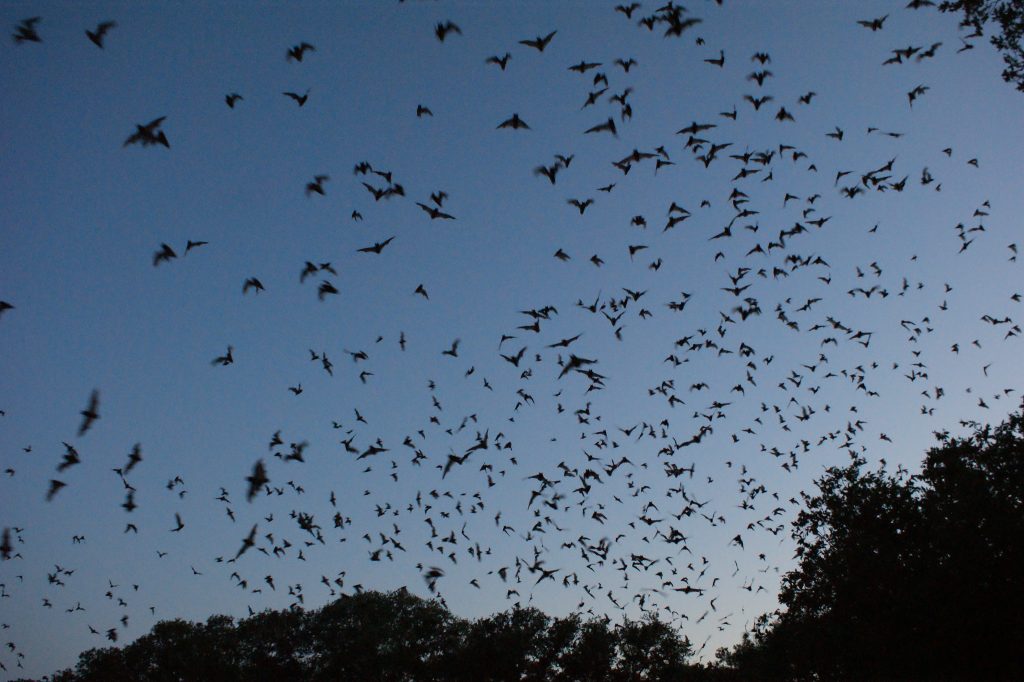
Bracken Cave Bats. Photo by Daniel Spiess.
2. Bracken Cave, Garden Ridge, Texas
Mexican free-tailed bats, rare migratory birds
Just north of San Antonio is the world's largest colony of Mexican free-tailed bats, flying 15 million strong. Actually, it's the largest colony of bats, period! Bracken Cave is owned and operated by Bat Conservation International, whose docents lead viewing tours at dusk when the furry flying mammals pour out of the cave to hunt, and at dawn when they return. Aside from the once-in-a-lifetime, nearly-overwhelming experience, you'll learn about their valuable role in keeping agricultural pests at bay, and how they're at risk due to disease and habitat loss.
Birders might spot an endangered golden-cheeked warbler, among many other notable avian species in this flyway hot spot.
- When to go: Mid-May through Mid-September, but you'll have to reserve your spot well in advance.
- What to wear: A poncho?
- What to bring: In addition to the required $45 membership fee (which covers the cost of the tour), bring a little extra to help BCI's programs, including their efforts to purchase and protect and conserve land surrounding Bracken Cave.
3. Cape Henlopen State Park, Delaware
Raptor migration
It's one thing to see a lone bald eagle on a snag, a peregrine falcon hanging out on a bridge, or hear a kestrel shrieking kee kee kee kee kee at you for no reason whatsoever. Imagine these three birds, plus a dozen other raptor species, flying by in the same day as part of their migratory route. While most raptors don't travel far as the seasons change, it's a sight to see when they do. Cape Henlopen is probably one of the few places to enjoy it.
Fun fact: Fall is when licensed falconers (legally) capture their hunting birds for the following season if they're not flying captive-bred birds. In the old-school way of doing so, they'd cover themselves with sand, with only a gloved hand sticking out, holding a mouse or other prey animal. When a raptor would come down for its meal, the falconer would grab the bird's feet with the other hand. After they'd calmed the bird down, and identified it as the legally approved age and species, it would be fitted with anklets and jesses and then manned, or trained, to the glove. Within weeks, it would be hunting small game with the falconer.
You, too, can trap birds for banding if you hook up with the right organization, but they'll use more efficient (and less gritty) methods of trapping.
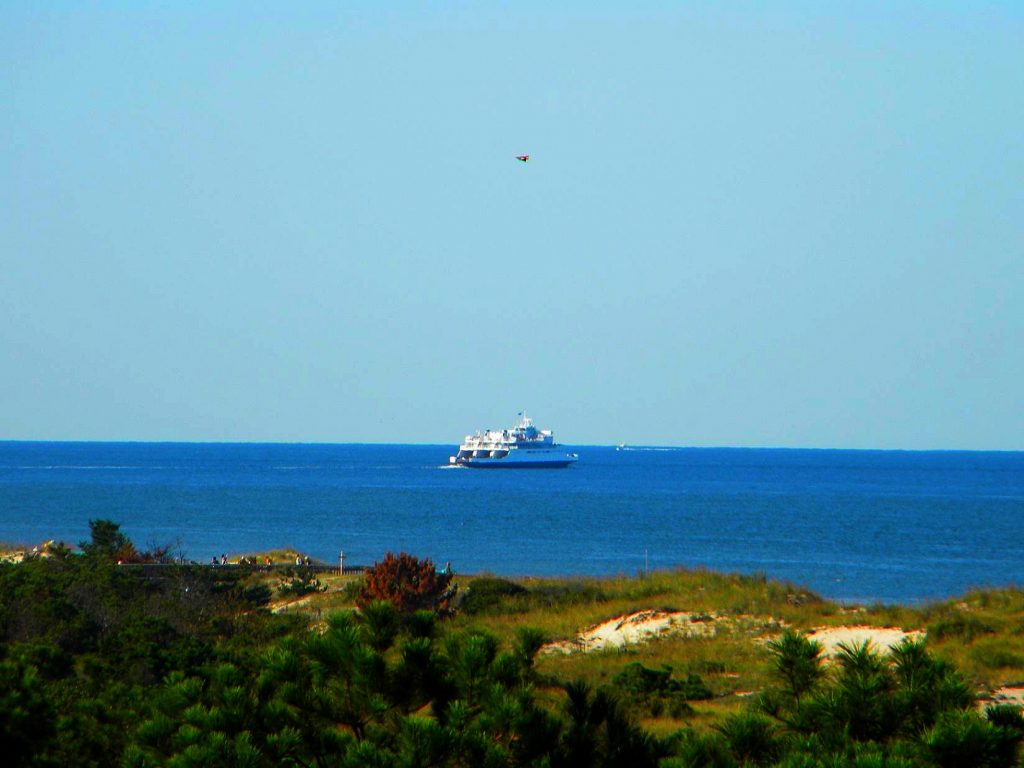
Photo by Lee Cannon © Creative Commons 2010. Location: Fort Miles - Cape Henlopen State Park.
- When to go: September through October
- What to bring: Beach chairs and a Thermos of your favorite hot beverage
- What to wear: Lots of layers, including a windproof and water-resistant jacket with pockets big enough for your binoculars. Avoid fur trim unless you want to look like dinner.
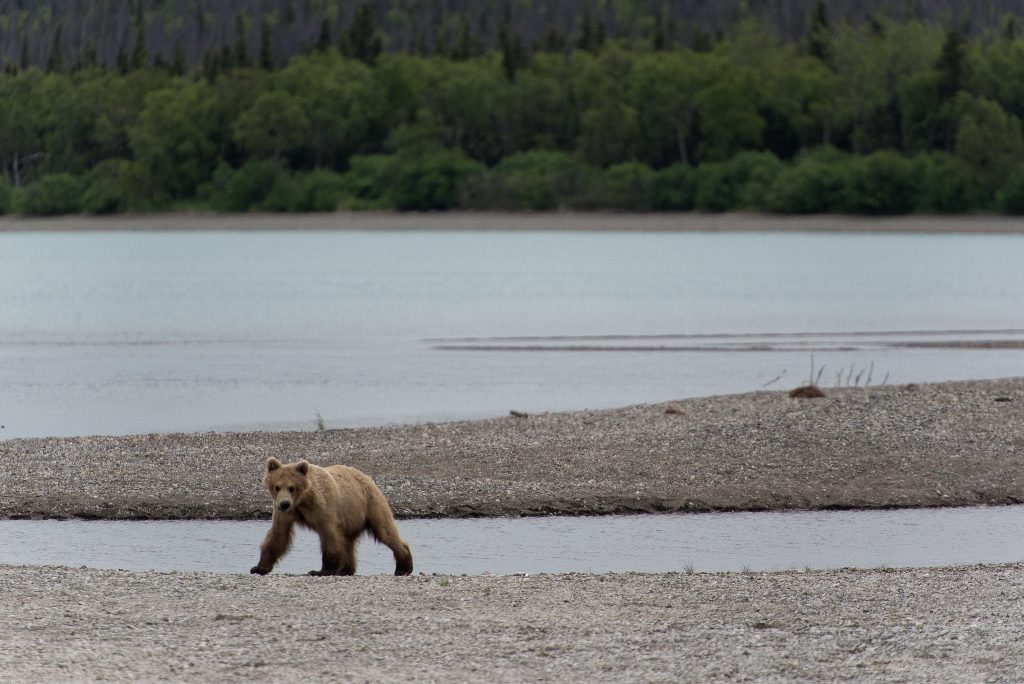
A subadult brown bear walking on a gravel bar in front of a lake and forest. Photo by Katmai National Park and Preserve.
4. Katmai National Park & Preserve, Alaska
Brown bear, sockeye salmon runs, migratory birds, humpback whales
You've seen the photo: A brown bear perches on the top of a waterfall as a sockeye salmon leaps into his open jaws. Decades ago, nature photographer Thomas Mangelsen snapped "Catch of the Day" at Brooks Falls in Katmai National Park & Preserve. That image, as well as the tragic story of Timothy Treadwell and Amie Huguenard, brought Katmai and its brown bears to the world stage.
There are several areas at Katmai where you can view brown bears, depending on availability of food and weather. Brooks Camp in July and September is the most popular. Set up your tent at Brooks Camp Campground. Or rent a rustic, hand-hewn cabin on Naknek Lake; it's on an island, so you'll have to paddle in!
Speaking of paddling, on the coastal portion of the park you'll have opportunities to view humpback whales and the occasional orca pod.
- When to go: June through September
- What to bring: Bear spray, fly fishing gear, and if you want to avoid the crowds at the Brooks Camp viewing platform and campground, a guide.
- What to wear: Industrial-grade DEET to fend off biting insects, and netting for gnats that will try and stuff your eyeballs. Anytime you're in the backcountry (and yes, there is backcountry camping) consider wearing clothing crafted with reflective fabric made with RECCO® technology. This material works like reflective cloth on steroids, making you searchable to rescue crews even in heavy cover.
Note: Don't mix up the bear spray with the bug spray. You'll have a very bad time.
5. National Bison Range, Charlo, Montana
Bison, bighorn sheep, pronghorn, lots and lots and lots of birds
"If I'm in Montana, why not just go to Yellowstone or Glacier National Parks?" Well, we give these places a lot of love, and there's no reason NOT to visit either. But sometimes, we have to throw the underdog a bone. Not that the National Bison Range is inferior in any way. Located in northwest Montana an hour from Missoula, this nature preserve is a mecca for those who want to see the state's famous wildlife without the pesky distractions of tourists. It's a bit drier out here, so you'll see more plains-oriented animals such as pronghorn and bighorn sheep.
- When to go: Spring is ideal if you want to glimpse newborn bison calves, but the NBR is an all-season experience.
- What to bring: Make the world's biggest Bingo card from this list of bird species found at the National Bison Range. Snipe would be in the "free" square. (Did you know snipe are real? No kidding!)
- What to wear: It all depends on the season, but you'll spend a lot of time hiking. I recommend wearing leg gaiters as added protection against ticks and rattlers, though the latter isn't that common. Camouflage may let you sneak up on birds for better photos, but don't go sneaking up on the bison. Those shenanigans are reserved for the silly folks who go to Yellowstone.
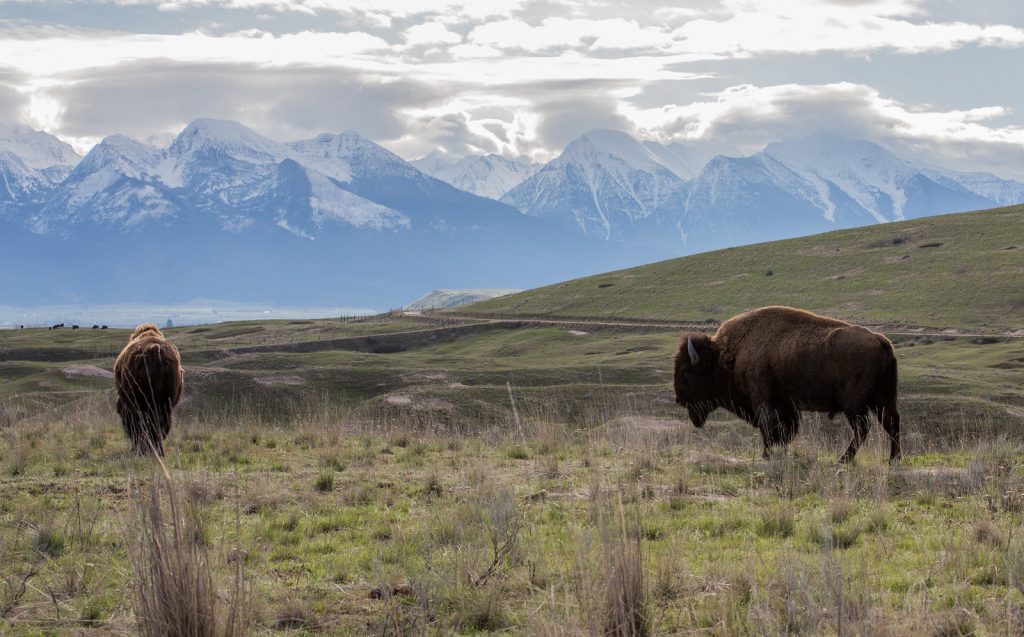
Photo by Dave Fitzpatrick / USFWS © Creative Commons 2017. Location: National Bison Range.
6. Northwest Territories out of Yellowknife, Canada
Caribou, musk ox, arctic fox, arctic hare, arctic wolf, ptarmigan, grayling
Some of the best wildlife viewing in North America is the subarctic tundra, which sweeps across northern Canada and eastern Alaska. The city of Yellowknife in Canada's Northwest Territories is, in my experience, an excellent jumping-off point for the Thelon River area and the Great Slave Lake, as rich with adventure guides as they are with unusual birds, mammals, and fish.
- When to go: Mid-August through September, when the tundra flora and fauna changes colors, and chances of seeing more spectacular aurora borealis colors increase. The caribou tend to herd up for the fall migration, though you might need to scout them out from above.
- What to wear: Don't be caught dead in this region without "no-see-um" mesh head netting. Gnats and mosquitoes are horrible through mid-August. Wear lots of fleece, but only under other layers since it's Velcro to reindeer moss. Glove/mitten convertible hybrids (glomitts) are ideal for nighttime photography. Choose expedition-quality, though, preferably down-filled.
- What to bring: Most guide outfits share their recommended packing lists. Pay attention! Bring a silk liner to increase the warmth rating of your own zero-degree (or colder-rated) sleeping bag. Pack your flyfishing gear for arctic grayling or world-class lake trout.
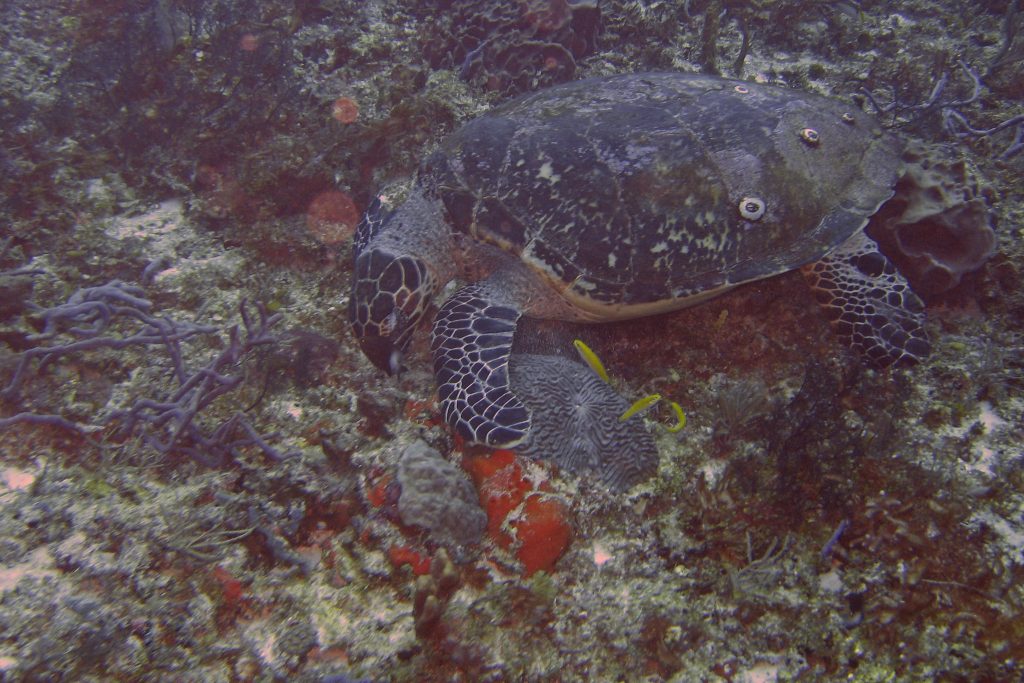
Playa Del Carmen. Photo by Curtis & Renee.
7. Your Favorite Beach in Mexico
Six of seven sea turtle species
My apologies for being vague, but sea turtle conservation groups on both Mexican coasts and in Florida organize volunteer programs and guided tours during nesting and hatching seasons. You can help protect the turtles from beach traffic, poachers, and unleashed dogs, or simply shadow researchers as they survey nest activity.
- When to go: Young sea turtles emerge throughout summer, and females come to shore to lay their eggs July through December.
- What to wear: A good headlamp and clothing with reflective tape will help you see and be seen as you're navigating dark beaches.
- What to bring: If you're volunteering, carry along your own handheld radio and extra batteries. All volunteer coordinators love team members who bring their own radios.
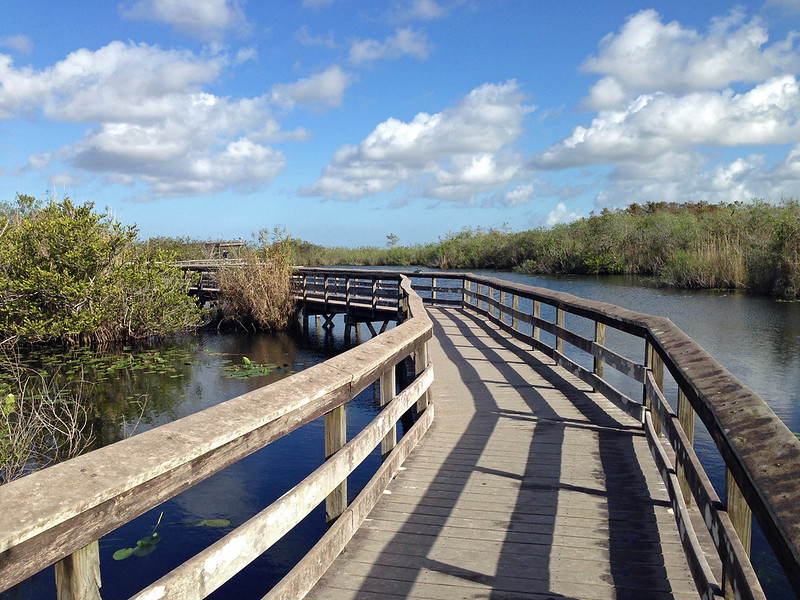
8. My Apologies to Everglades National Park, Florida
If it can eat you, it lives here
Okay, I'm fudging this a bit since I've never actually been to the Everglades, but I do know the wildlife here is nothing short of spectacular. We all knew there are American alligators, but did you know about American crocodiles? Me neither! And of course, there are the fierce and deadly manatees, the Skunk Ape (according to some folks), and the iconic flamingo.
My sources tell me that October through May is the best time to visit, when there's less rainfall and it's easier to get around (and stay dry.) So get out there and pick up the slack; there are more than 1.5 million acres in Everglades National Park alone, with opportunities to paddle, hike, camp, fish, and take terabytes of amazing nature photography. Make sure to read our guide on what to do and see in Everglades National Park for more info on top activities and attractions.
Have you already explored the 'Glades? Care to write about it? Contact the KÜHL editors, and share your story! As for me? I have an inexplicable phobia about those big pink chickens, so you won't catch me dead anywhere near their stomping grounds. I'll stay up here in Grizzly territory, thank you very much.


